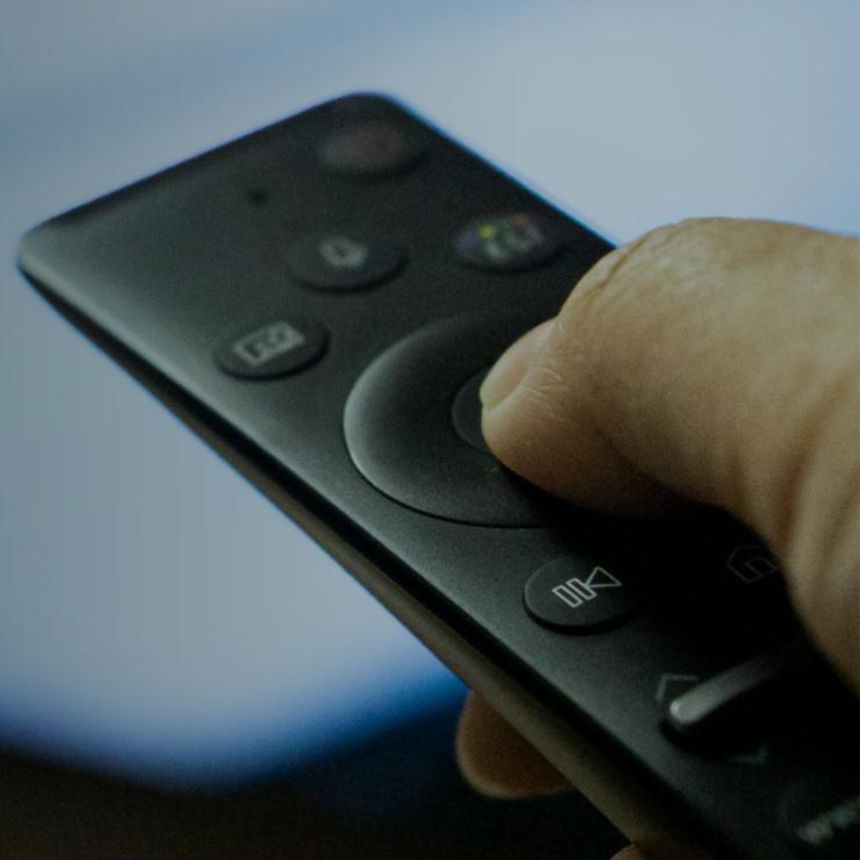
In this exclusive “Masters of Media” series, Integral Ad Science (IAS) speaks to the Movers and Shakers of the APAC advertising industry, on all matters digital.
Valentina Lizzi is the Senior Manager – Platforms ANZ at InMobi.
Valentina is a graduate from Accademia di Comunicazione and Politecnico di Milano with a Postgraduate Master in Marketing and Business Communication and a Master of Science in Urban Planning and Policy Design.
With eight years of experience in client relationship as well as tech support and advice, she is an experienced media specialist with a solid understanding of digital and programmatic advertising with experience in both Supply and Demand side, managing high volume paid campaigns and publisher’s inventory across multiple markets.
Please tell us about your digital advertising journey and your current role at InMobi.
My advertising journey had quite an unconventional start. Not many people are aware that I studied to become an architect and when I was younger my dream job was to plan city developments. But after getting a bachelor’s and master’s degree in urban planning I realized that this was not going to be what I wanted to do in life. I discovered I was intrigued by digital advertising and the different media buying mechanisms. So, I decided to give it a go, and start from scratch. It has not been an easy decision, but I am so glad I made it because now I absolutely love working in such an ever-evolving industry where there is something new and exciting to learn every day!
During my career, I have been lucky enough to work in different markets (US, MENA, DACH, and now ANZ) and live in different cities as well. I studied in Milan but started my programmatic journey in Amsterdam and then moved to Sydney almost four years ago. I currently work at InMobi and look after the growth of the InMobi Exchange business in Australia and New Zealand. I also lead the Programmatic Platforms team in ANZ and work with platforms partners, verification providers, and ATDs across the ecosystem.
What are some of the key Mobile 2022 trends that have piqued your interest?
I know that nobody wants to talk about the pandemic anymore, but I think that the last couple of years have deeply changed how brands are approaching their consumers. People have increased the time they spend on their smartphones and consequently, we are seeing a huge change in the way app owners and advertisers are responding to this shift as they keep consumers at the center while creating experiences. It is remarkably interesting to see how both the buyer and the supply side of the industry are approaching this change and adapting to the new consumer behavior. App developers are trying to make the time users spend on their apps more enjoyable and blend ads into this process.
On the other hand, brands are rethinking their approach to consumers by strategically investing in digital ads, and rethinking creativity by working on innovative experiences to capture user attention. Additionally, verification partners play a huge part in this process as well, trying to protect media investments from fraud.
I think that this big focus on customer-centricity is not just a passing fad that came up recently, but a trend that is here to stay as the industry continues to adapt and evolve around this topic.
“The big focus on customer-centricity is not just a passing fad that came up recently, but a trend that is here to stay as the industry continues to adapt and evolve around this topic.”
What are some of the initiatives InMobi has undertaken to propagate for the wellness of its employees in ANZ?
During the past couple of years, everybody’s life has changed. On one side, it was great to see companies empower employees to have so much flexibility in their work location, but on the other side, the lockdowns and the isolation that came with the work from home model have been a major cause of struggle for some people. I think that InMobi had a really good approach during this time. We had many internal initiatives to keep people connected and other activities to give people some time to “unwind” – like the “No Meetings Fridays”, a few bonus wellness days off across the year, and access to therapists throughout the year – and this approach is here to stay despite the world slowly opening back up. On a personal note, because of the lockdowns and border closure, I could not see my family in Italy for 3.5 years and once the Australian borders finally reopened, I had the full support and encouragement from the company to take some time off and work remotely from Italy for a few weeks.
I honestly feel pretty lucky to be working for a company that puts employees’ wellness and mental health first. A culture like this really helps people to believe that they work in an environment where they can be transparent and open up to their managers if they do not feel “OK”, without the fear of jeopardizing their careers.
Talk to us about growth in games and how InMobi is monetizing it for publishers?
Gaming has been a rapidly growing industry and during the last couple of years, we’ve seen a
massive acceleration – half a billion players in the past three years – totaling 2.7 billion gamers globally. This acceleration in the growth of mobile gamers began when people started spending more time on their smartphones, especially on gaming apps. Specifically in Australia, 85% of gamers play on their smartphones, and almost 90% play at least once per day. This has also been a social effect of the pandemic, as people say that video games help them connect with others who have similar interests and social interactions now happen on gaming platforms. The demographic split of gamers is quite interesting as in Australia, 58% of gamers are women and almost half of them are above the age of 45. So we can definitely say that the scale and the variety of the audience reach are two key advantages to take into consideration when talking about gaming.
InMobi has long recognized this trend and is collaborating with leading gaming publishers across the globe to enhance their monetization strategy. Apart from working on ad experiences and formats that are the most suitable for gaming apps, like rewarded ads and interstitials (which help increased fill rates and eCPMs) we have recently expanded into ingame advertising to help gaming developers generate a new revenue stream through an innovative ad format that blends within the gameplay environment. In fact, InMobi recently announced a preferred programmatic in-game ad partnership for the Asia-Pacific (APAC) region with Anzu.io.
On a more technical level, we are integrated with all the leading header bidding providers and continue to increase these connections through more local contexts. We also help publishers maximise the diversity of demand they can see and eCPMs. Lastly, our SDK integration supports publishers with safe data collection, ad rendering, measurability through our integration with Open Measurement SDK, and addressability through InMobi’s UnifID, our industry-leading identity solution.
With brands moving away from keywords and cookies, how is InMobi engaging consumers through contextual mobile advertising?
Contextual targeting has developed into a crucial topic as user targeting is becoming more complicated after the iOS 14.5 launch and the impending third-party cookies depreciation by Google Chrome. However, apps and app categories can be a great proxy for user behavior and preference.
Lately, InMobi has been focusing on in-game advertising and it is great example of how contextual targeting can be leveraged, especially in mobile environments. If the user is inside a shopping mall in a game, there might be ads that make sense in that context and create a better user experience in the game as well.
InMobi also recently launched curated marketplaces in Australia and New Zealand which are a series of privacy-compliant customized marketplaces based on both audience and contextually relevant supply to better help mobile advertisers reach consumers. These private marketplaces (PMP) provides custom-built audiences, custom creative support, pre-built supply packages, and managed services for
optimizing the campaign performance.
“People have increased the time they spend on their smartphones and consequently, we are seeing a huge change in the way app owners and advertisers are responding to this shift as they keep consumers at the center while creating experiences.”
Metaverse has become an area of interest for brands, how are brands exploring this space?
While the idea might feel like a novelty right now, there is arguably a huge potential for brands in the metaverse. But many of them are still trying to figure out where to start. New technology always requires a curious approach, but brands should follow a few guidelines: pick your targets, watch what the competition is doing, look for new applications, plan your entrance, and keep your balance. Metaverse has become the first digital environment to combine business and social worlds, where brands can build communities and increase visibility. Many brands have used this to create immersive digital products, like Disney began integrating the physical, digital, and virtual worlds to help guests navigate Disney properties and platforms. Similarly, Coca-Cola partnered with Tafi to design virtual wearables for Coca-Cola’s first-ever non-fungible token (NFT) collectibles in the metaverse to celebrate International Friendship Day.
The metaverse is an interesting space with multiple opportunities for brands to also engage with their target audience: when video game platform Fortnight announced a food-fight event between Team Pizza and Team Burger, Wendy’s launched an organic campaign to promote its burgers – a wonderful example of how brands can leverage metaverse for moment marketing.
This makes in-game advertising a great stepping stone for the brands into the world of the metaverse and the closest we are to experiencing advertising in the medium today. Indeed, brands can programmatically insert their ads anywhere within the gaming environment – from billboards in a soccer game or on a bus, or even enable users to design their own avatars with advertised brand apparel.
The compatibilities of the metaverse and gaming show us that the latter could potentially be
the epicentre of any media and marketing strategy of brands preparing for the metaverse. The gaming industry is already equipped with a scalable and immersive ad tech infrastructure that can be the early inroads for brands to drive the right audience-building and engagement opportunities in the metaverse.
What’s your favorite book/podcast/movie and why?
I wouldn’t consider myself an avid reader, but I love all the books by Tiziano Terzani. He was an Italian journalist and Asian correspondent for a German newspaper, who wrote many books that describe his life and all the historical events he witnessed in Asia from the early 70s until the mid-90s.
A Fortune-Teller Told Me is my favorite book. I spent quite some time backpacking in Asia a few years ago and I loved each country I visited. The way this book is written and how he describes the places he visits just makes me feel like I am still there, traveling and discovering new things about other cultures. The book talks about a curious event that happened to Terzani – in 1976, he was warned by a Chinese fortune-teller that in the year 1993 he must not get on any kind of aircraft. If he did, he would surely die. Most of the world wouldn’t have a hard time avoiding flying for a year, but as a foreign correspondent based in Asia, his job involved covering news stories all over the Asian continent in a time manner. In the end, he decided not to fly and traveled only by land or boat for an entire year.
What is your advice to the fresh talent in the industry?
The first piece of advice I would share with anyone who is at the very beginning of their career is to “test and try”. The advertising industry provides a wide range of possibilities to practice different types of skills: you can start your career doing something client-facing but then realize that you want to move into a more technical role, or vice versa. Remember that the option to switch, learn, and grow always exists. Secondly, you don’t need to wait to have the exact skills a job description requires before applying for a position: motivation, curiosity, and willingness to learn new things should be your most important skills set. If you want to learn something new about any media-related topic and improve some specific skills, keep an eye out there as there are a lot of certifications and courses open to anyone.
I feel that this advice sits very close to my personal experience and career so far: I studied to become an architect, then started a completely new journey in digital advertising covering majorly technical and operational roles, and now I spend 80% of my time interacting with clients and growing partnerships. As a last piece of advice, always remember that there is no rule when it comes to your career and future, you are the one who pivots it.
 Share on LinkedIn
Share on LinkedIn Share on X
Share on X

